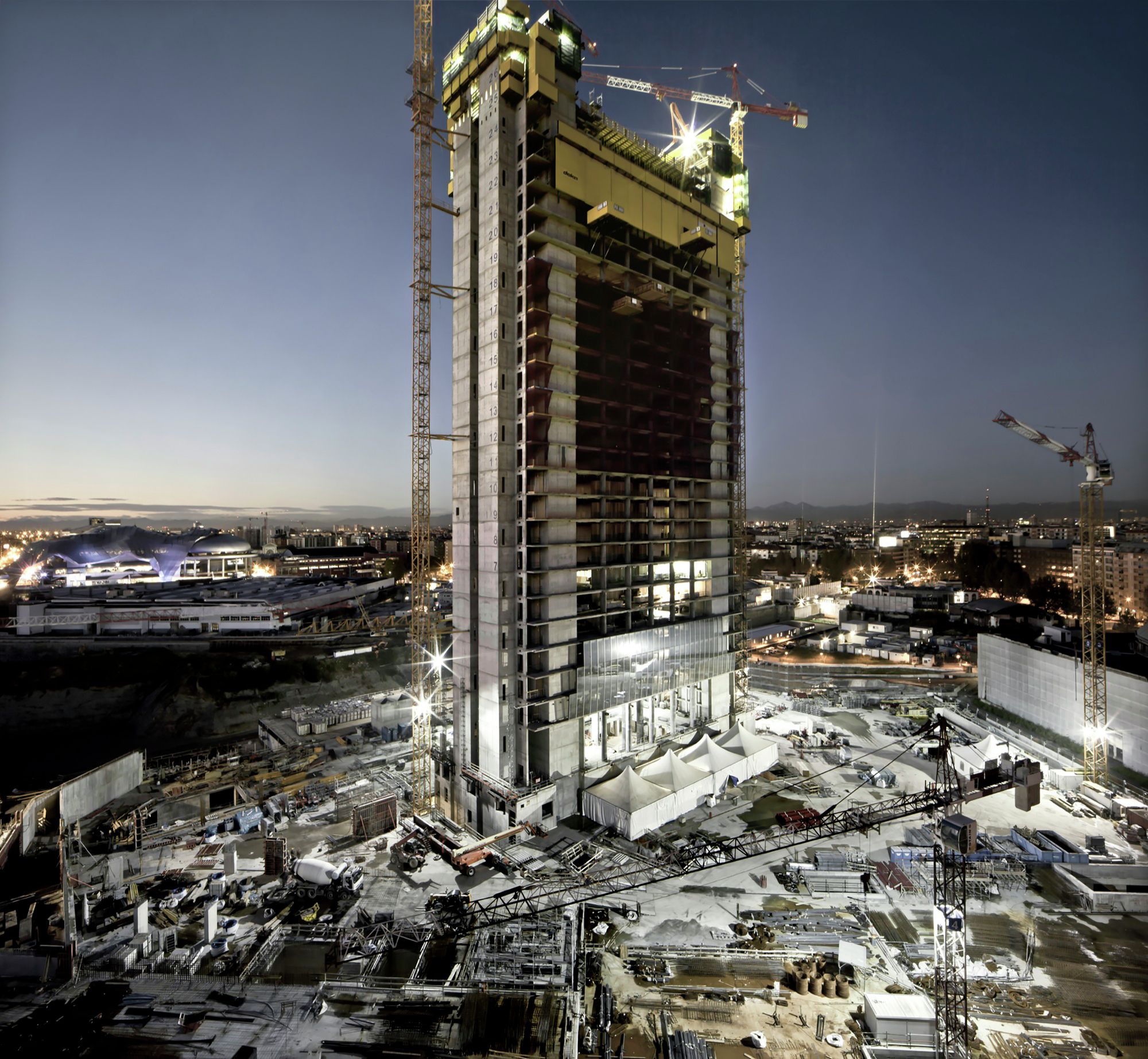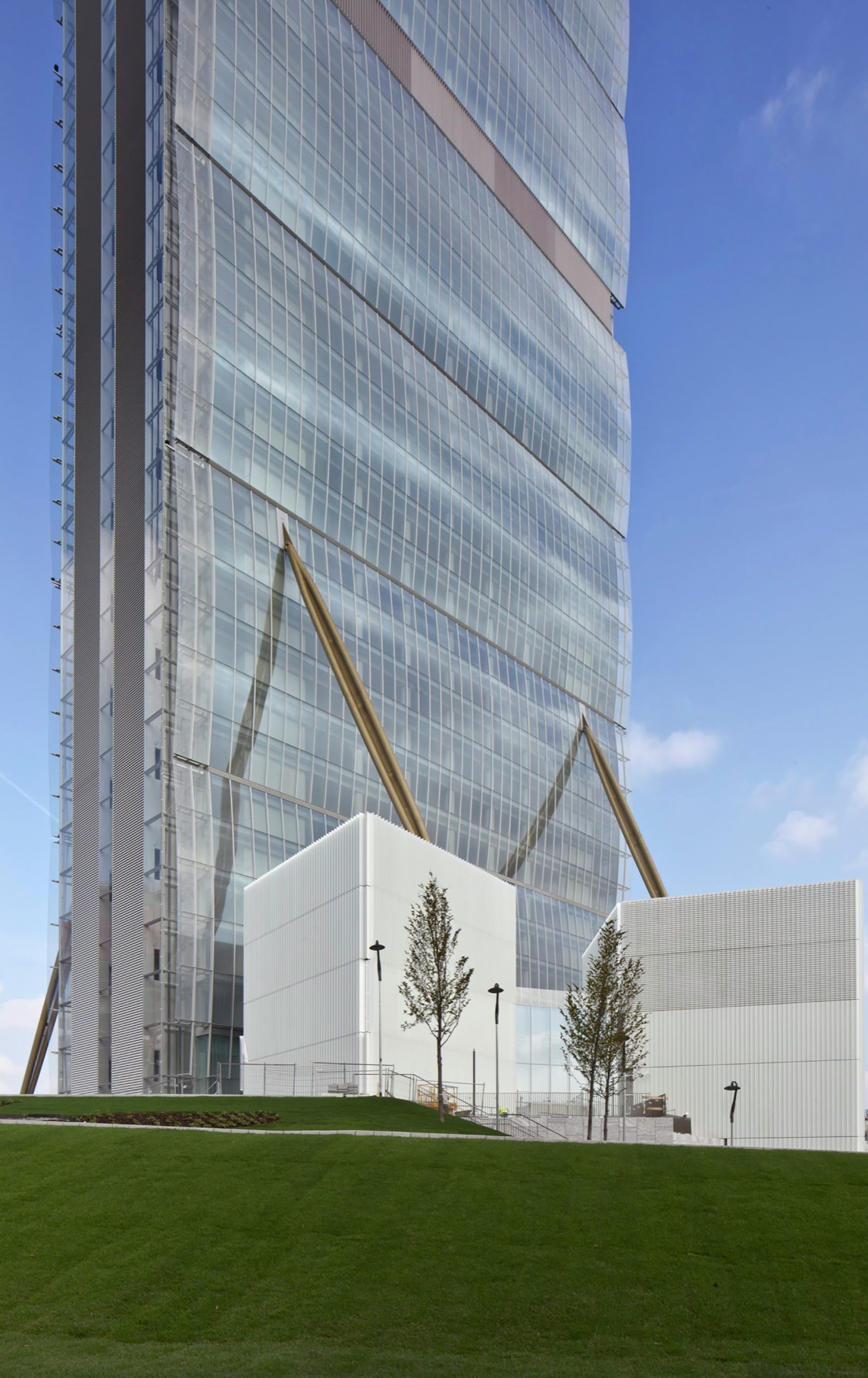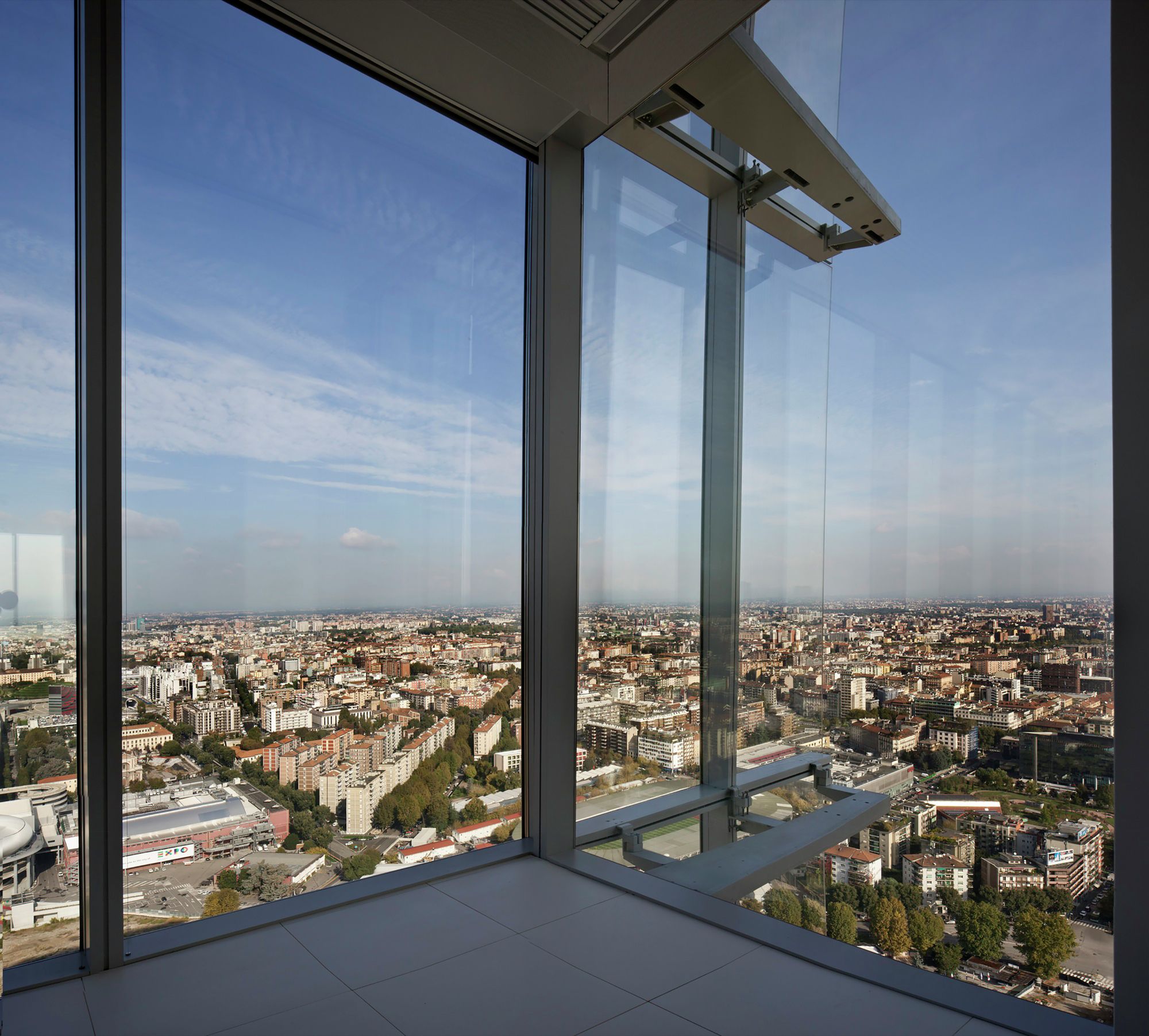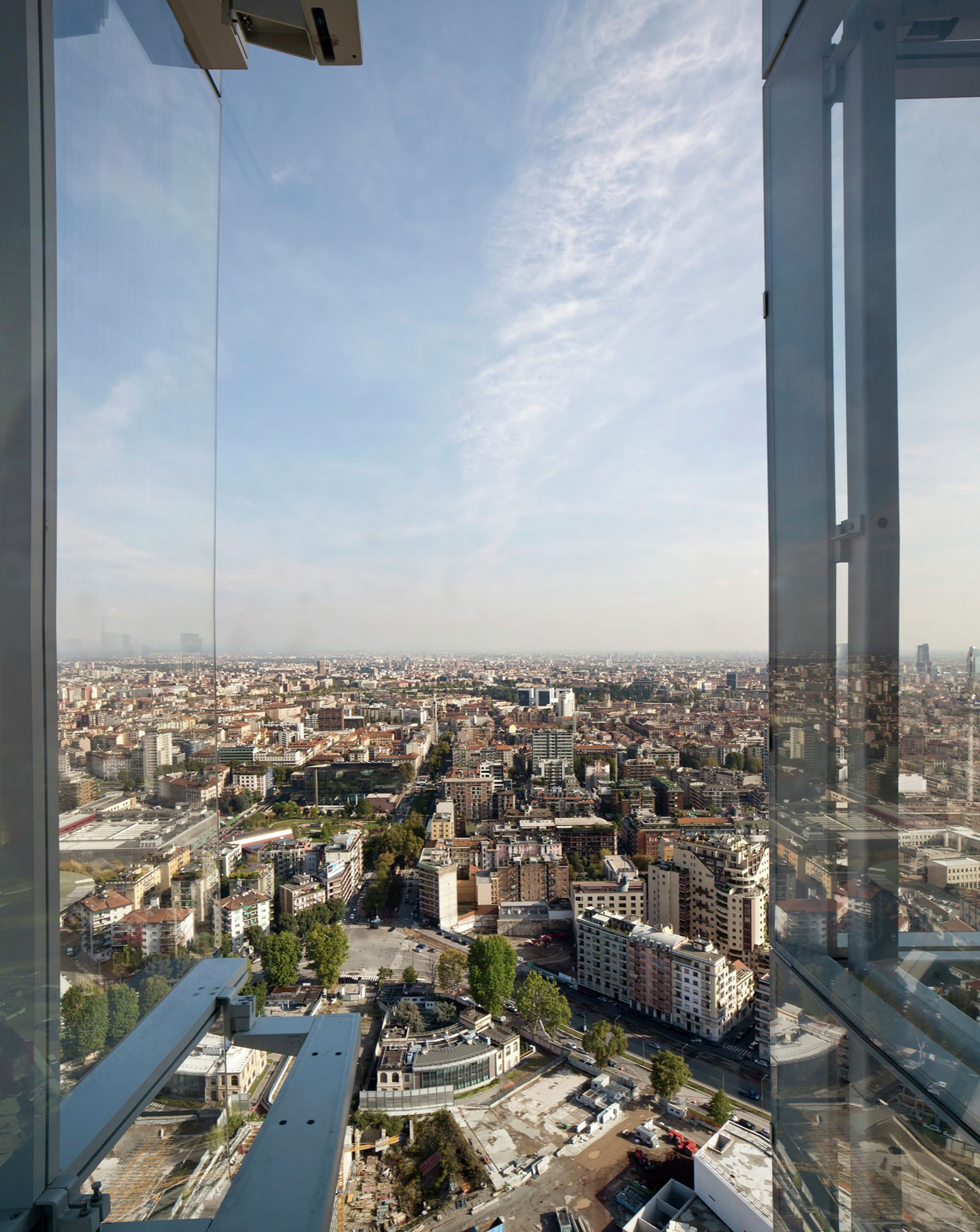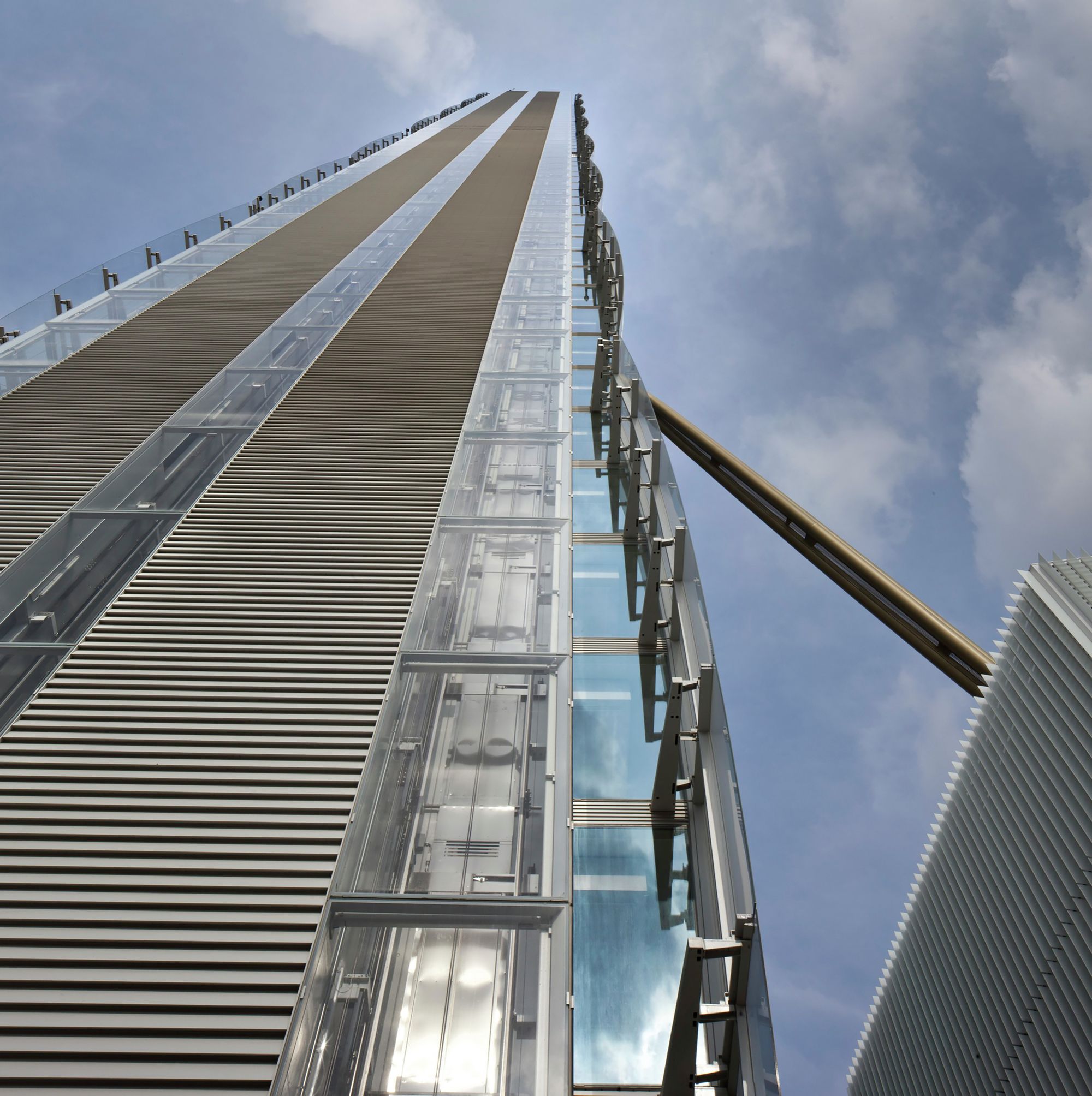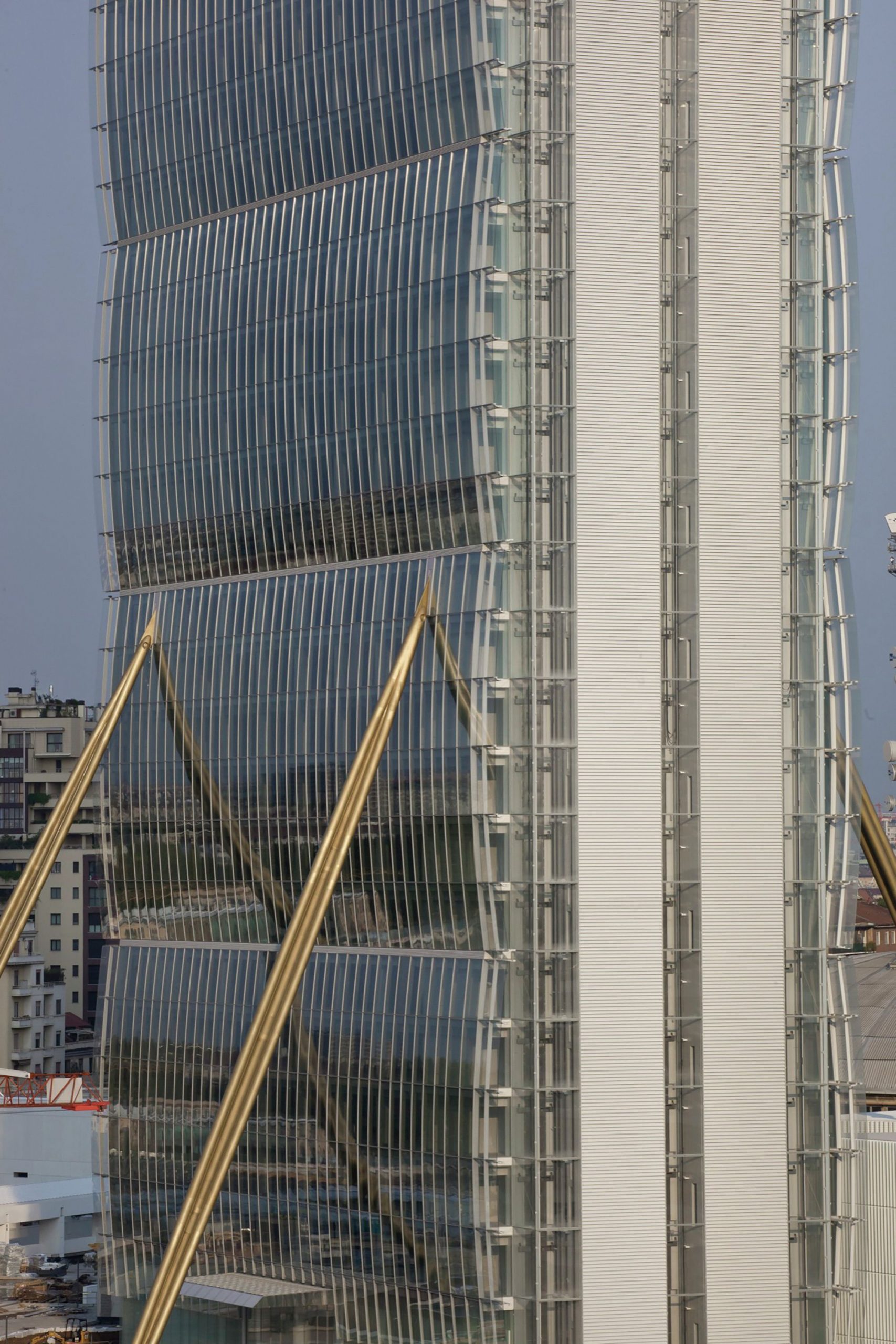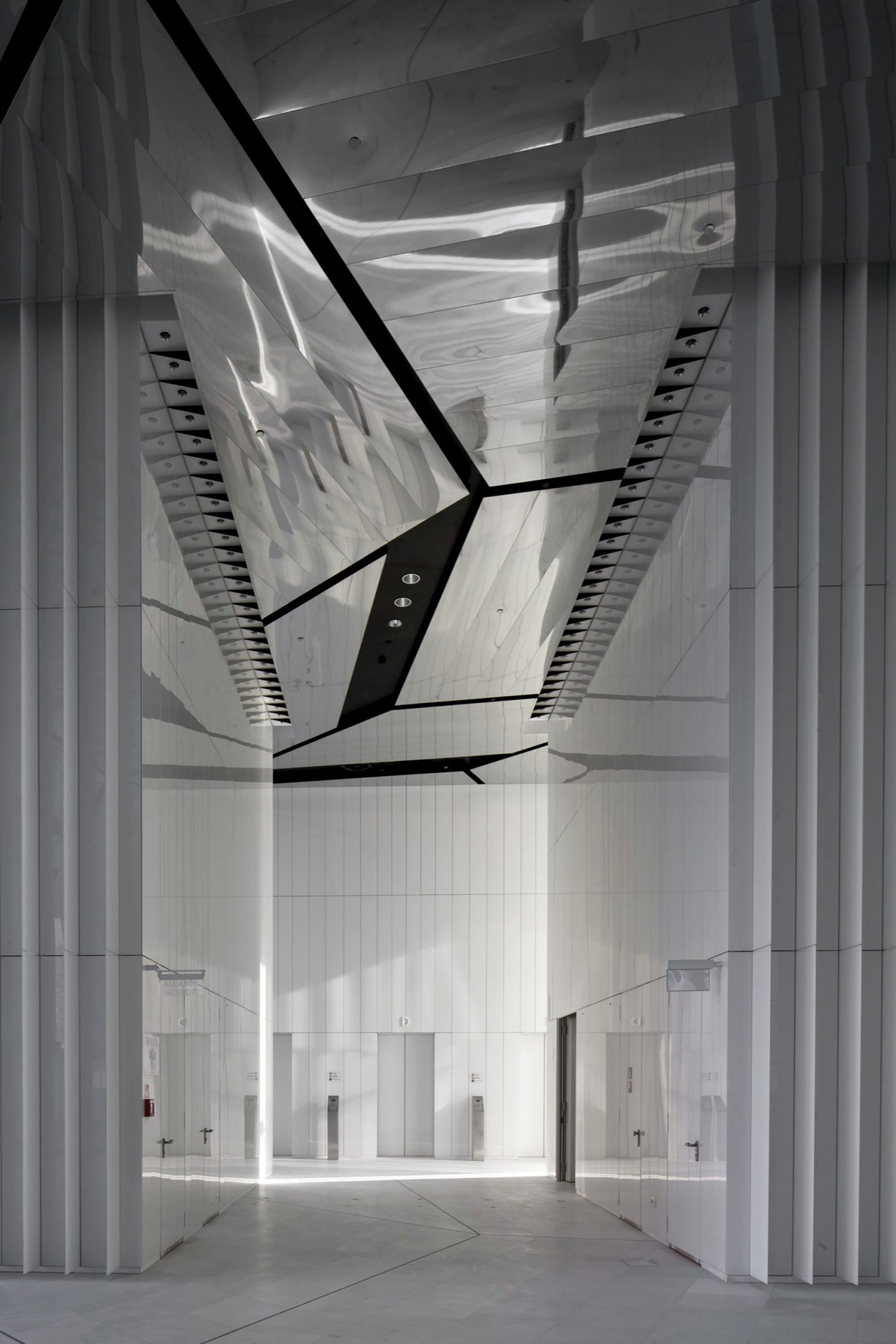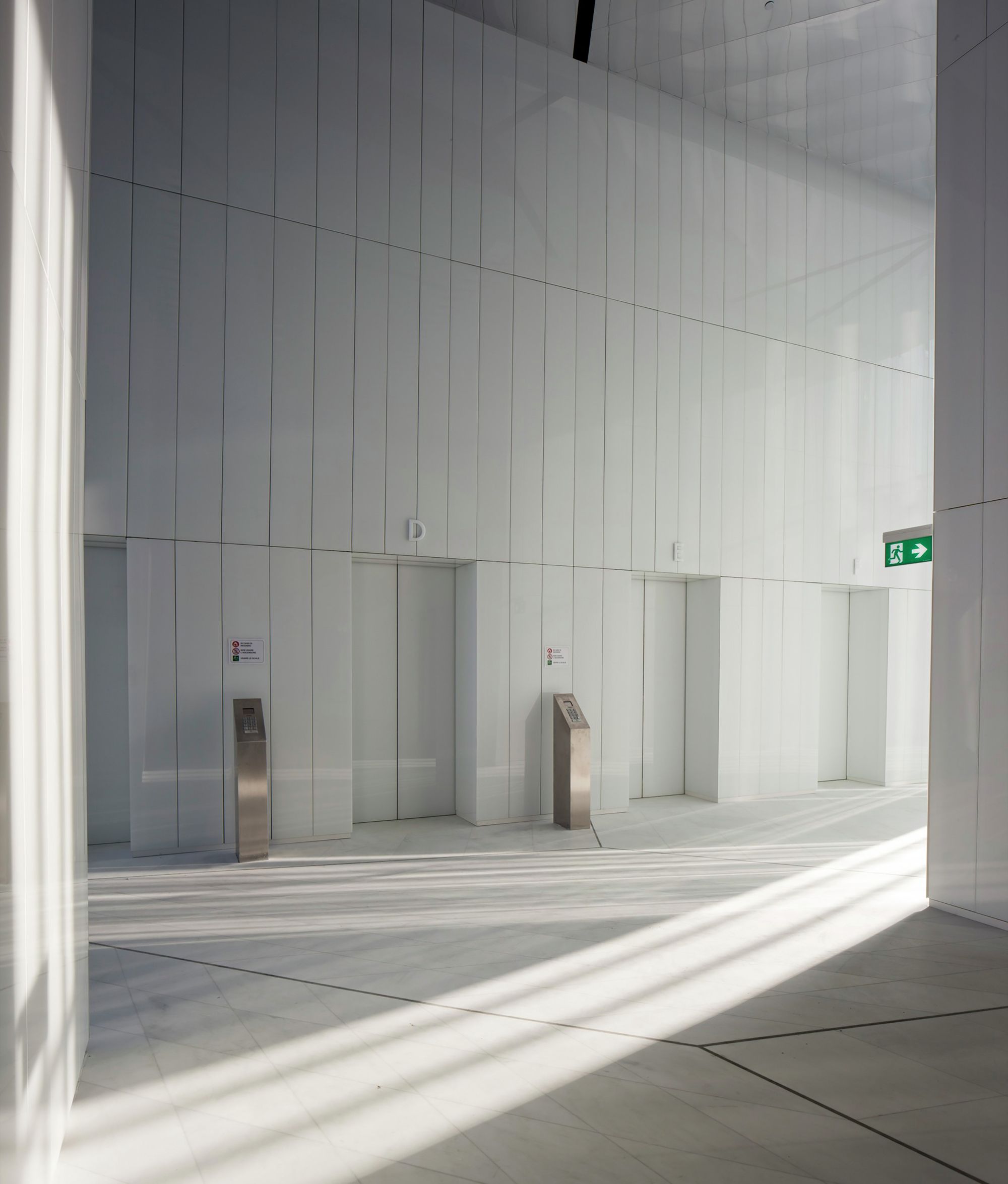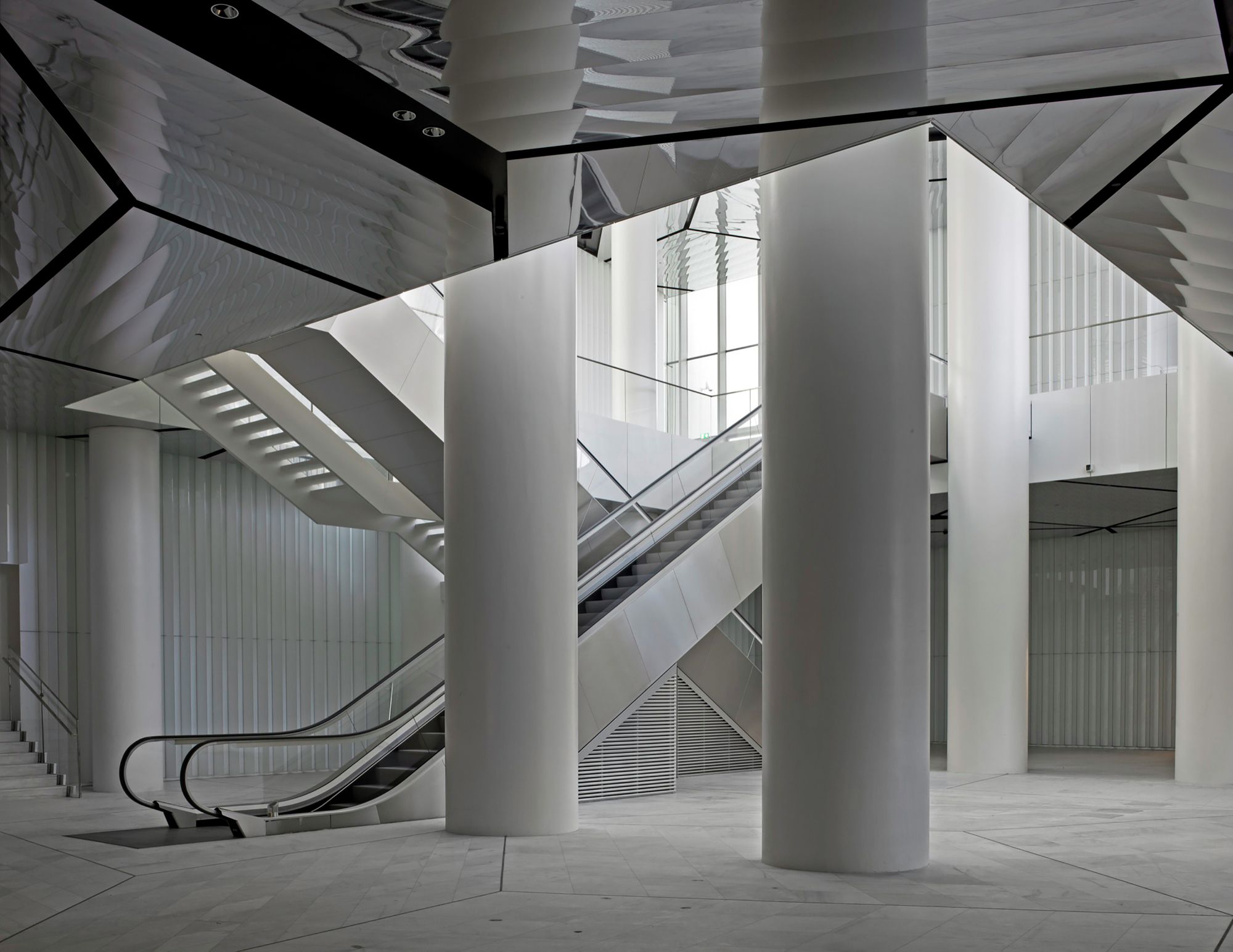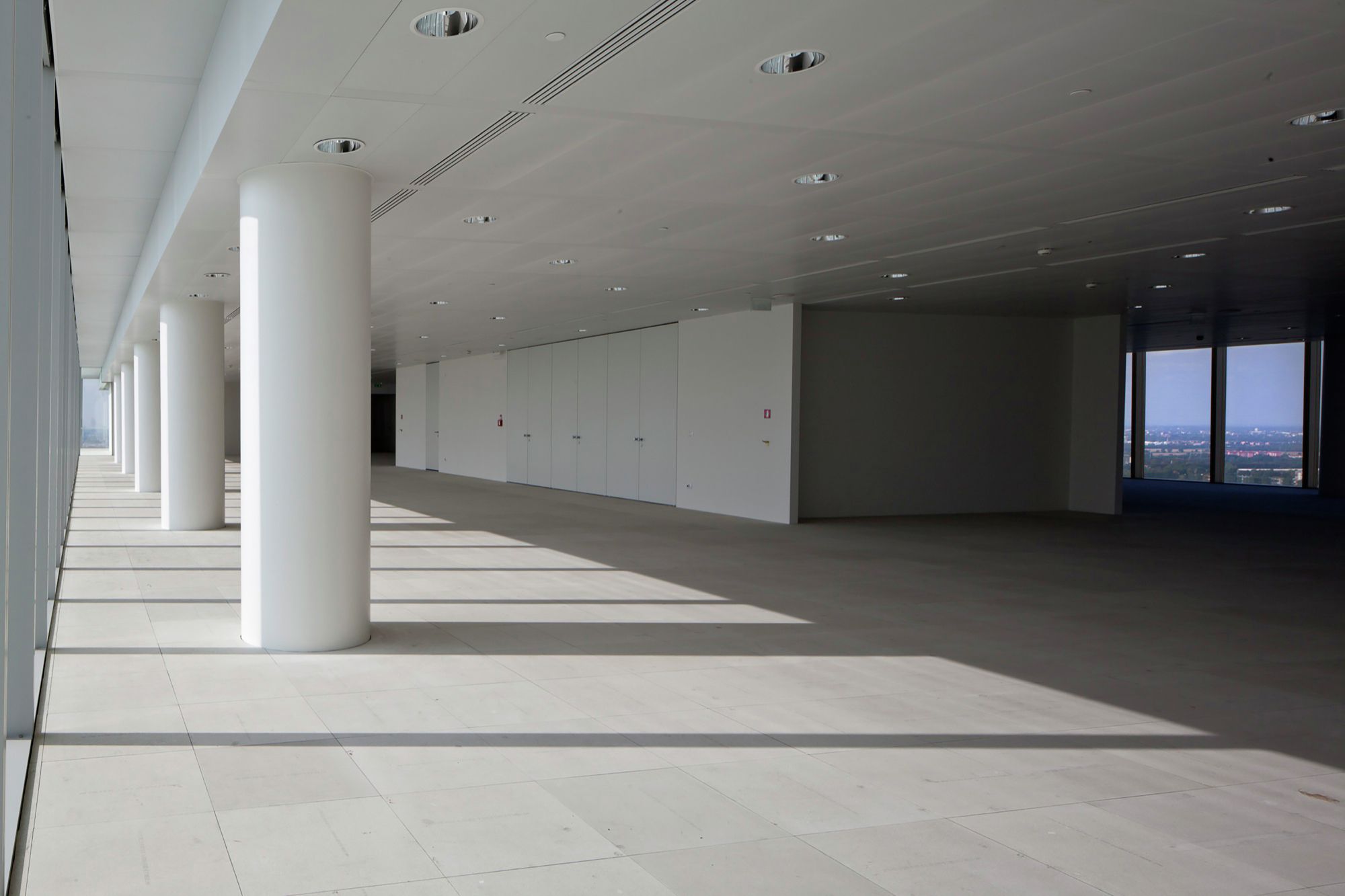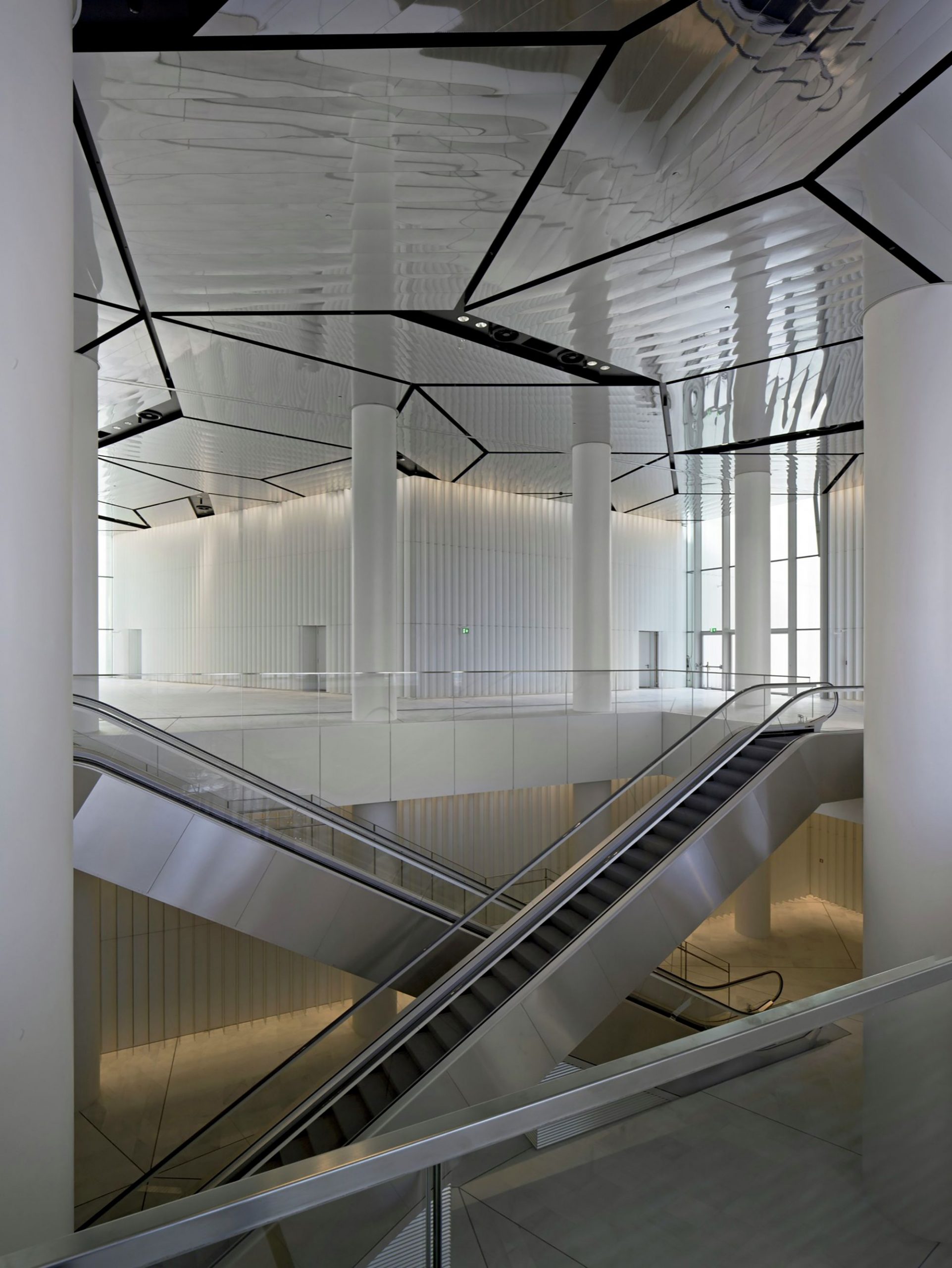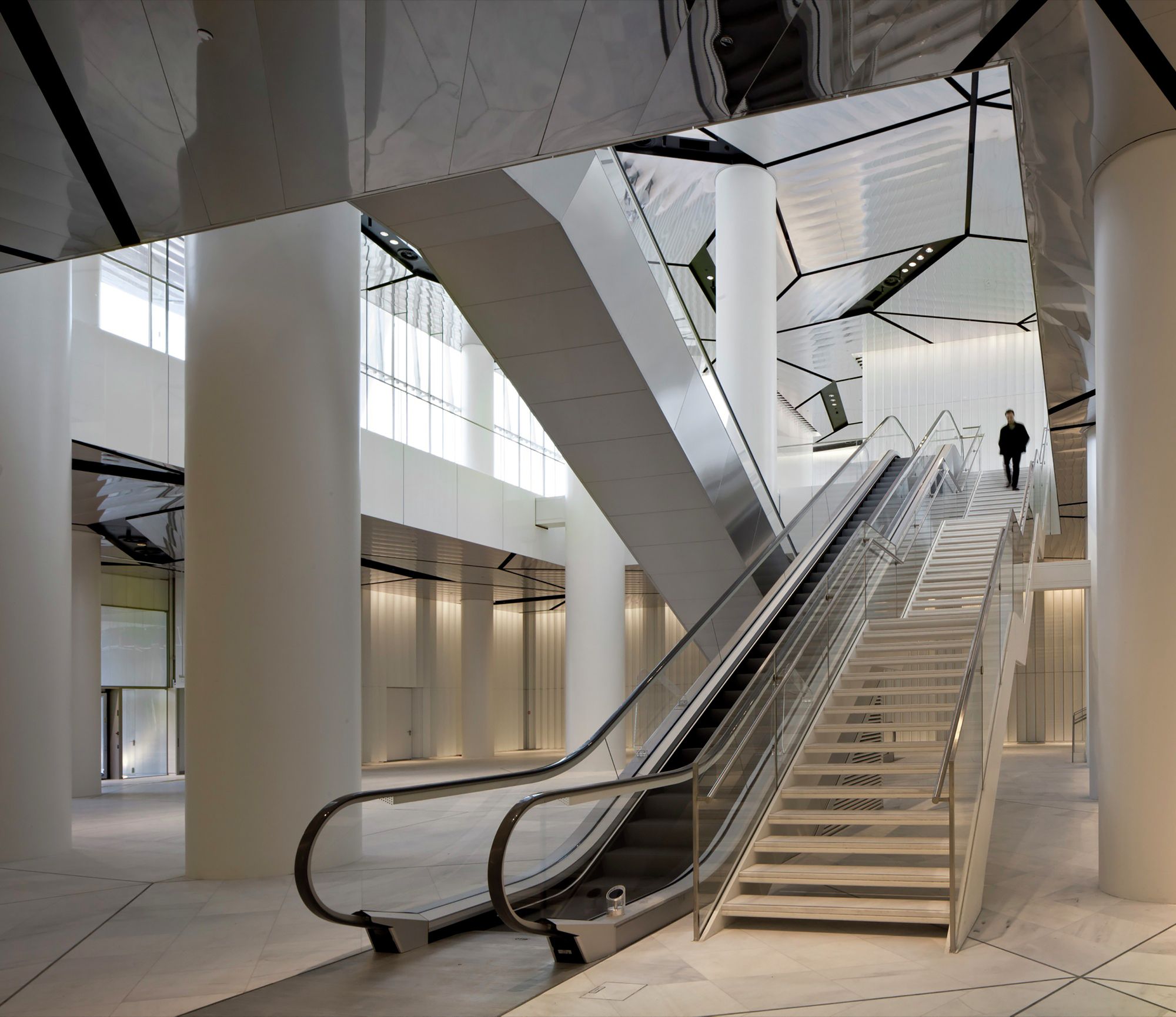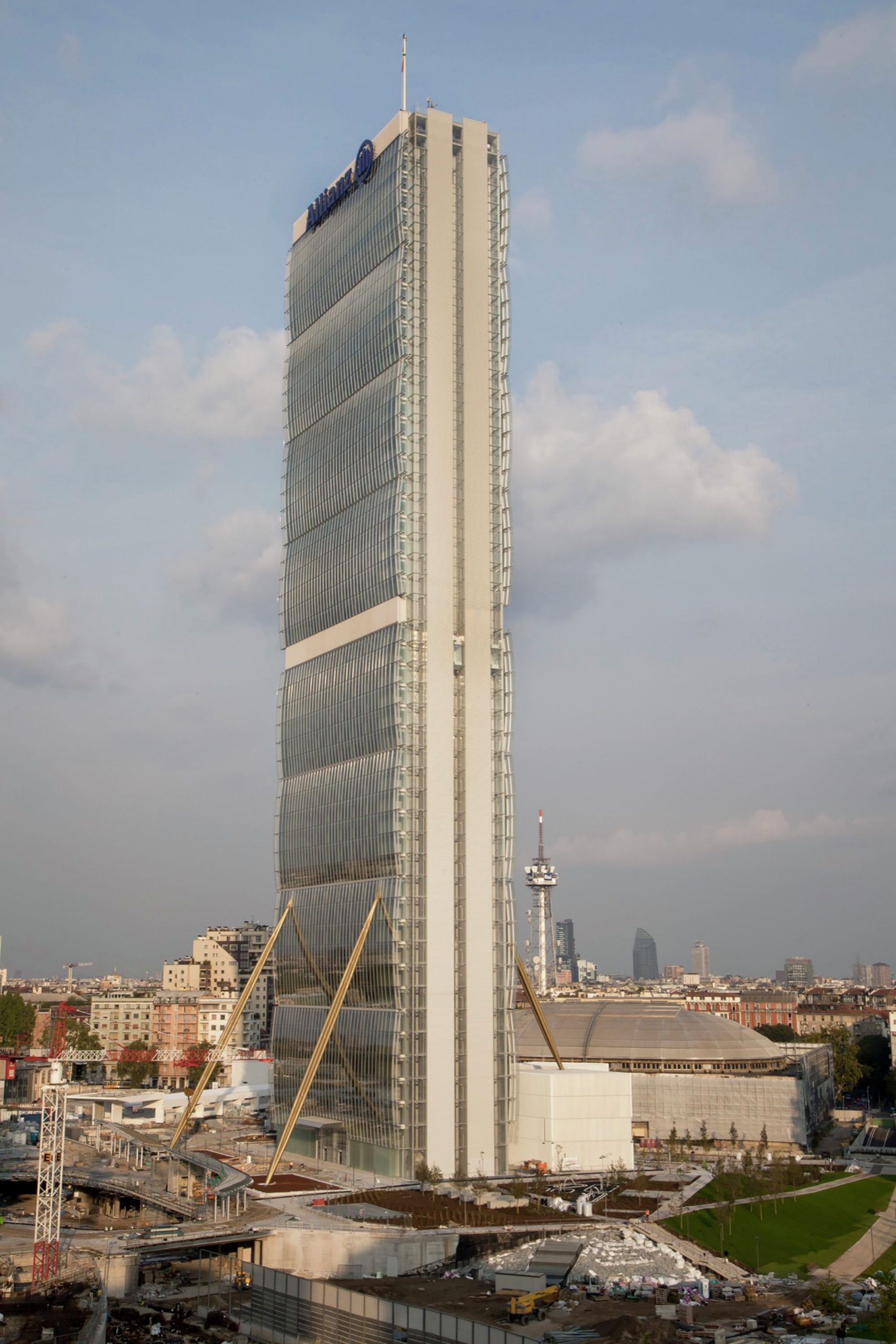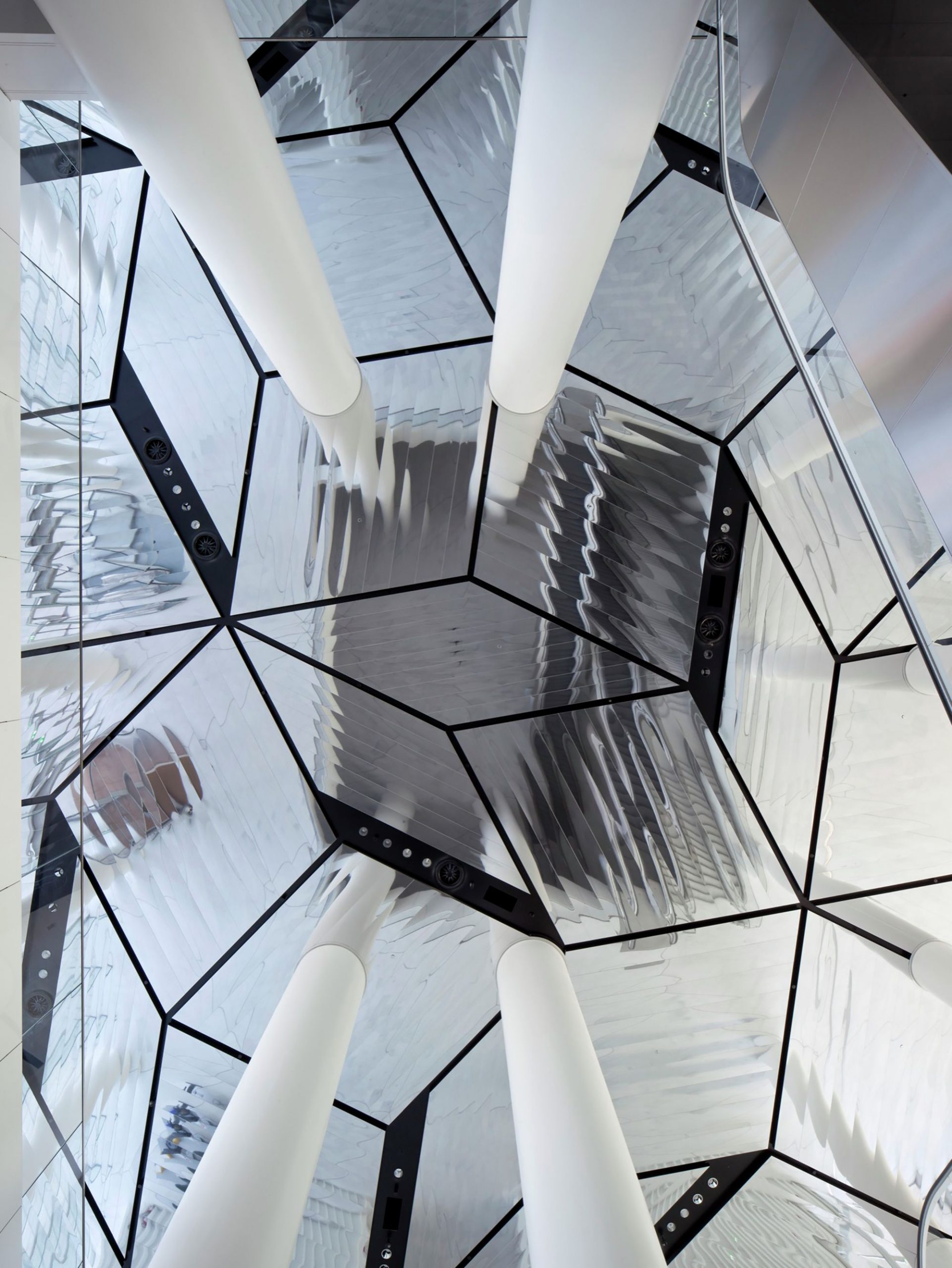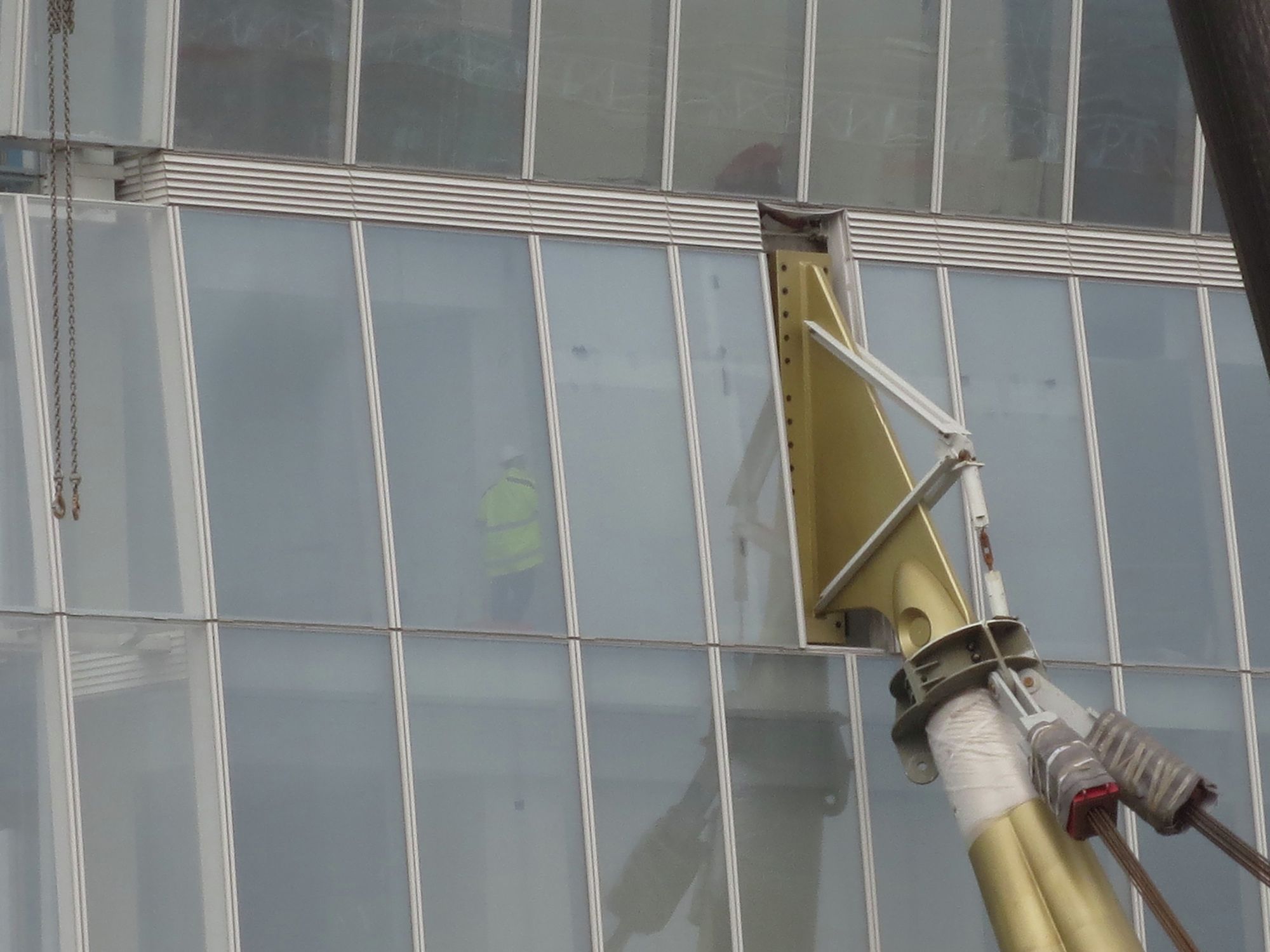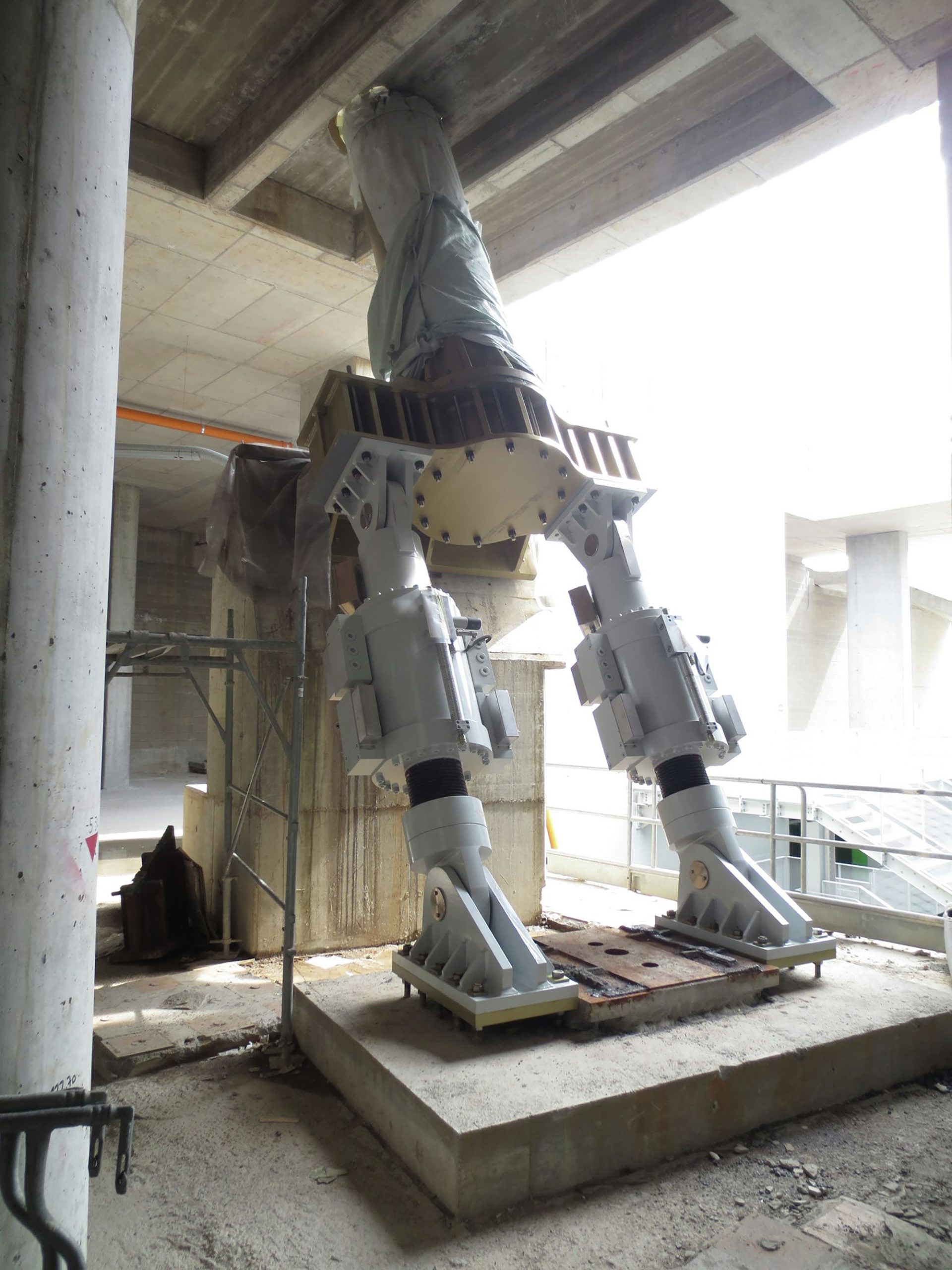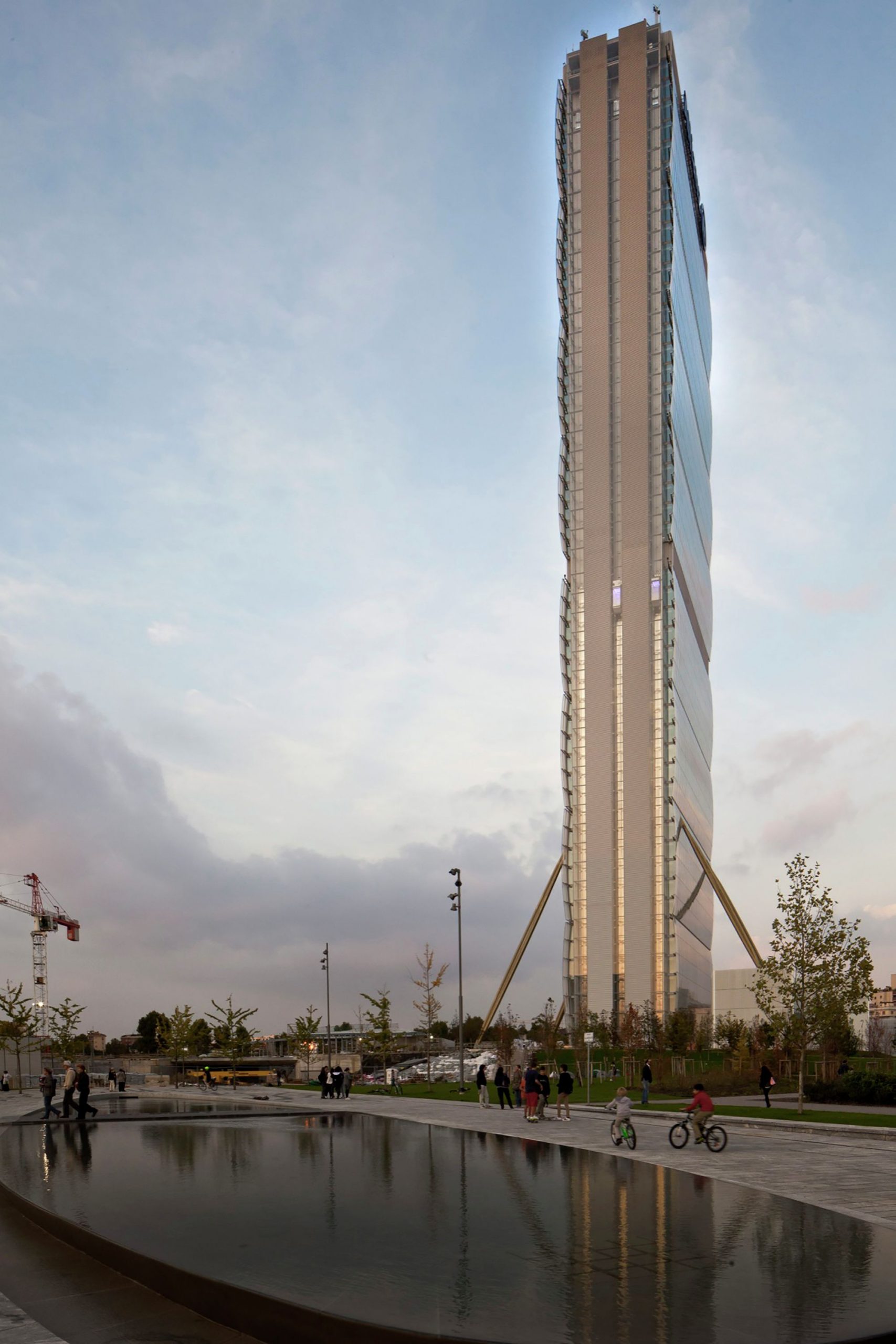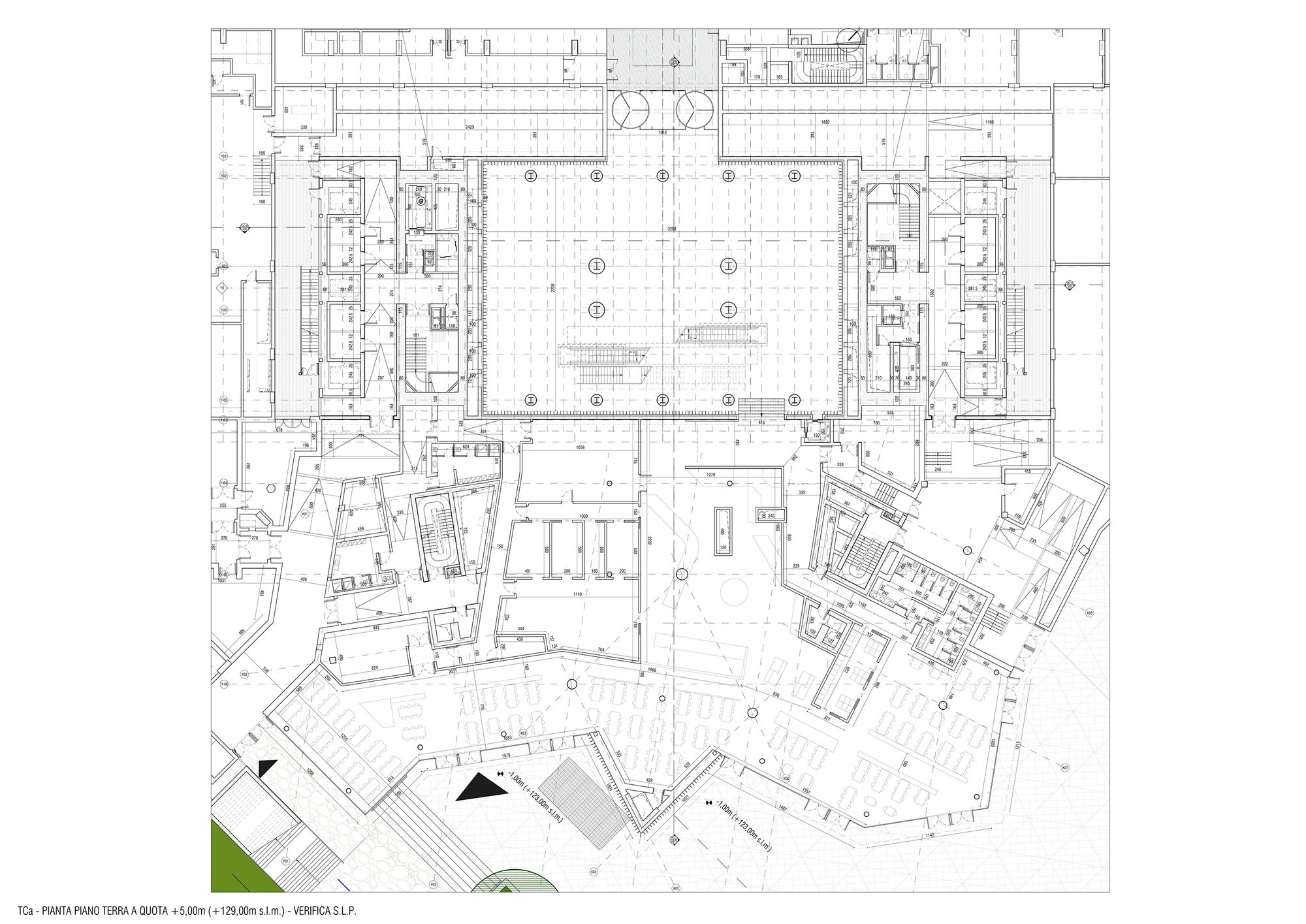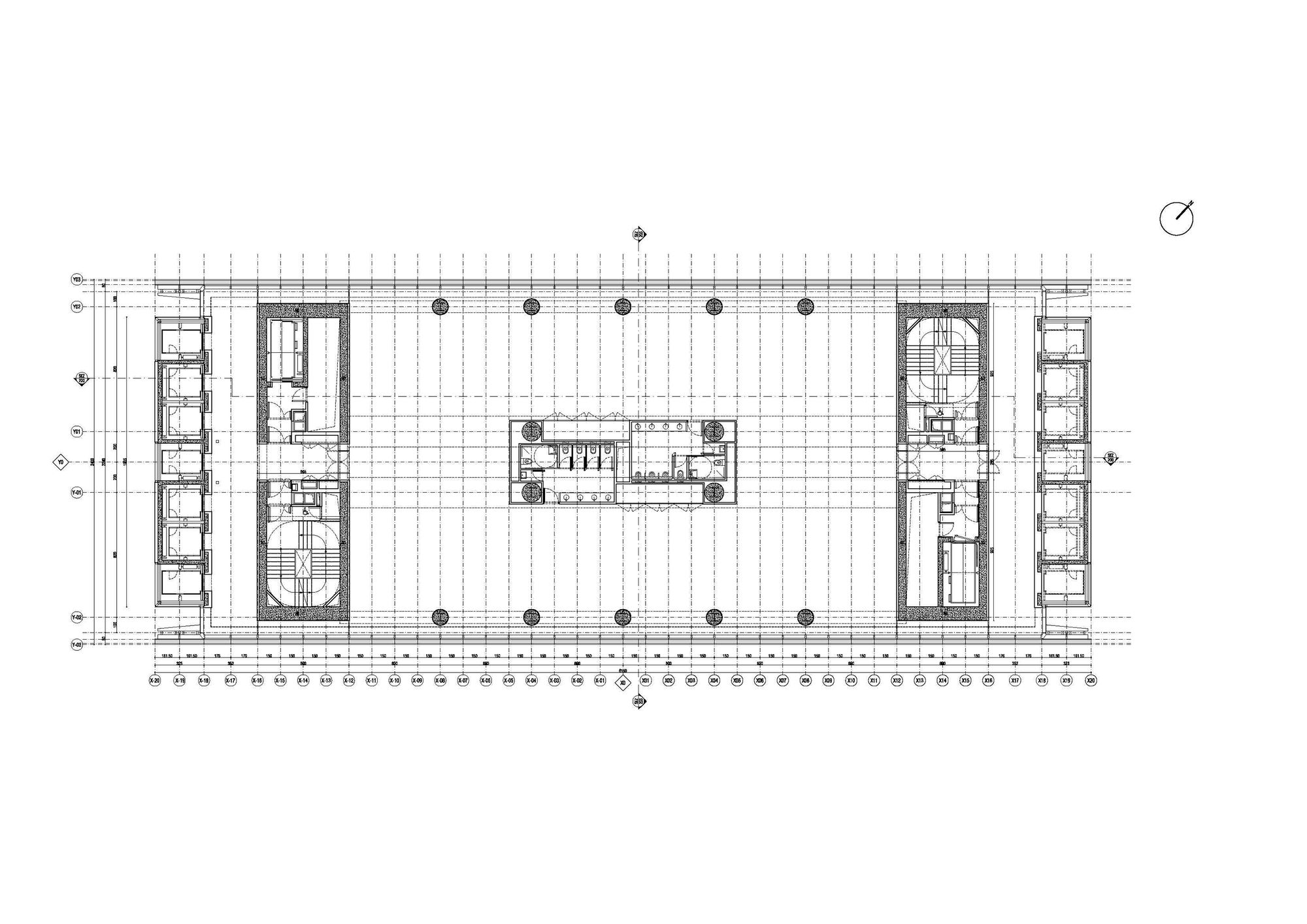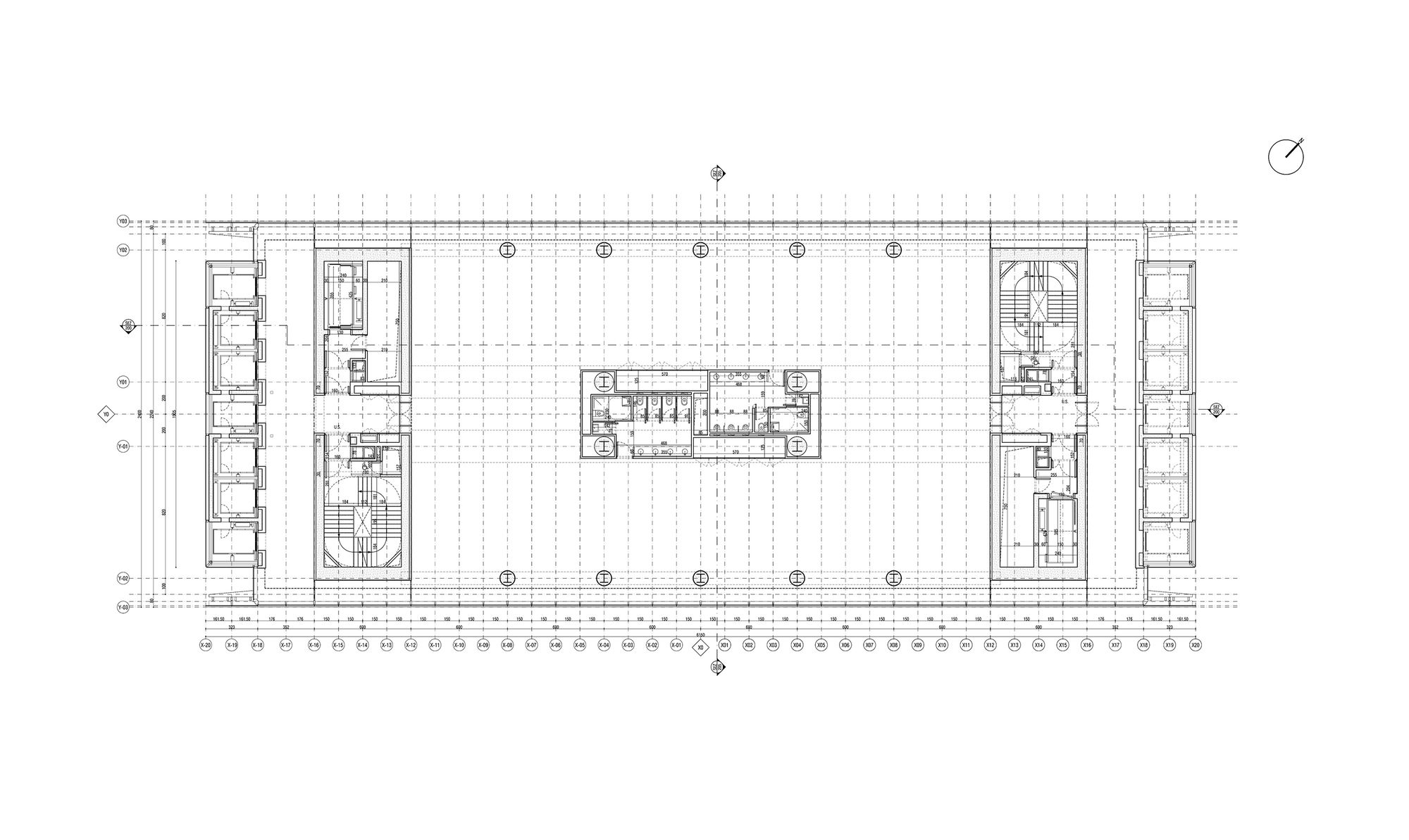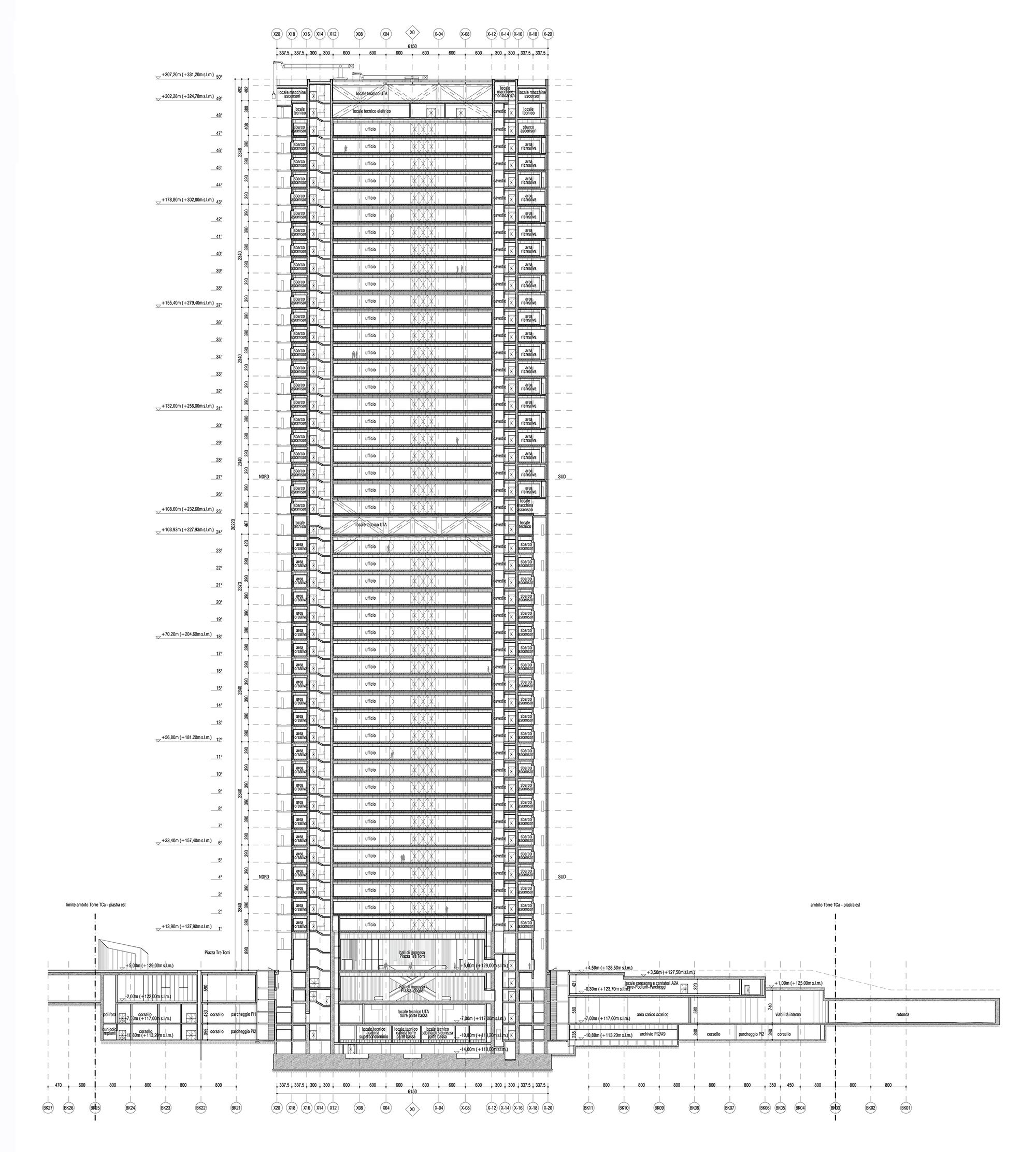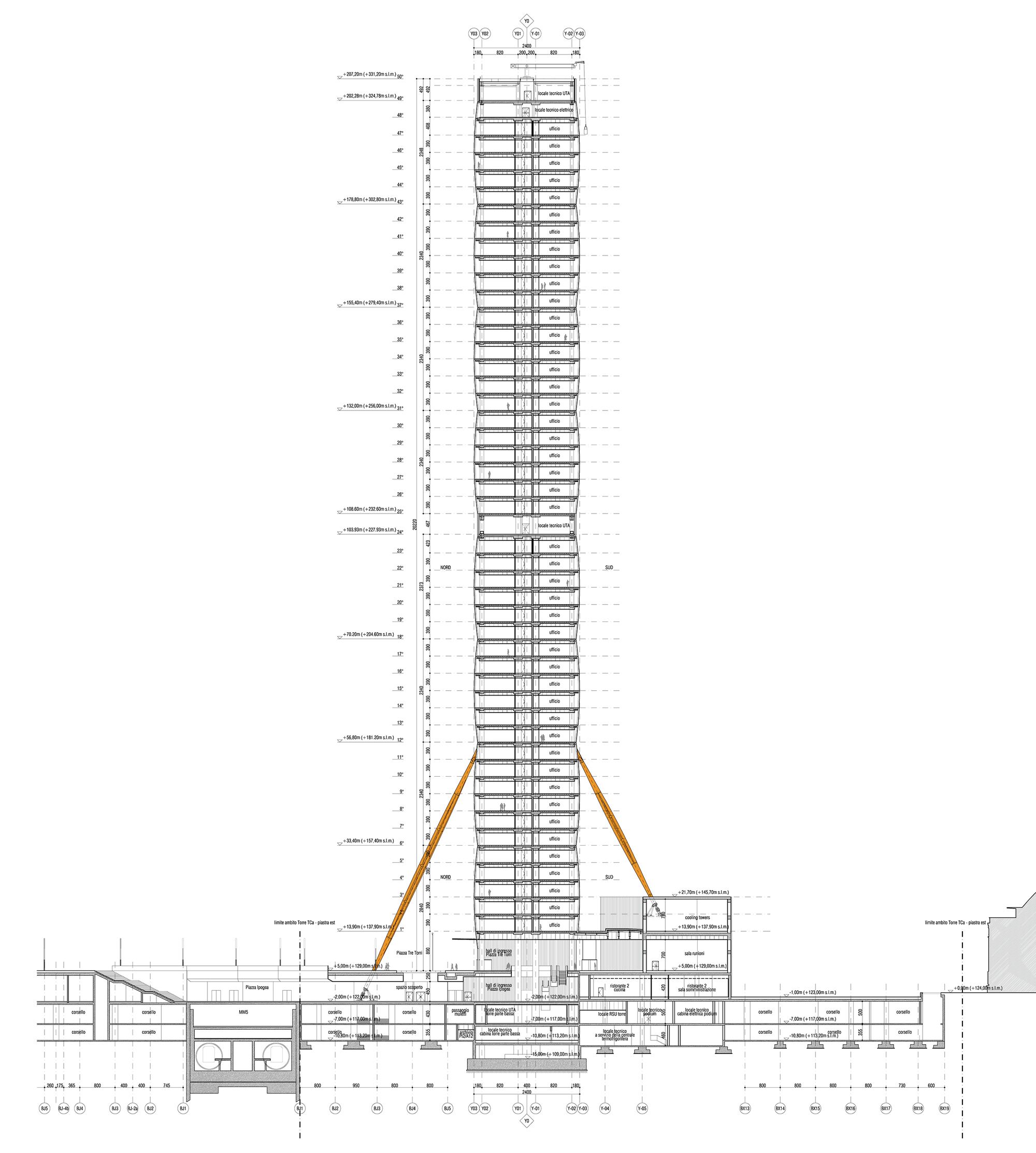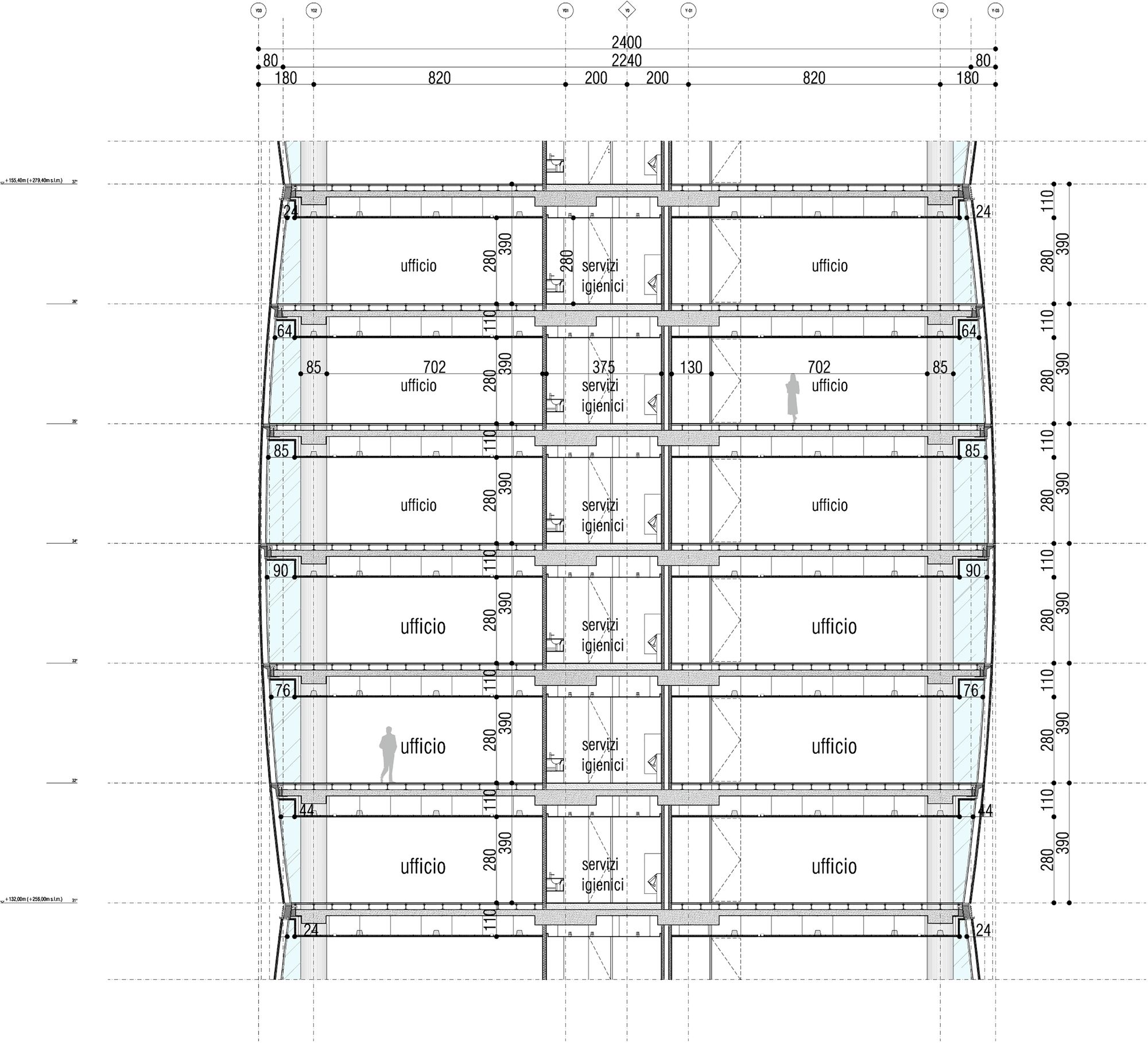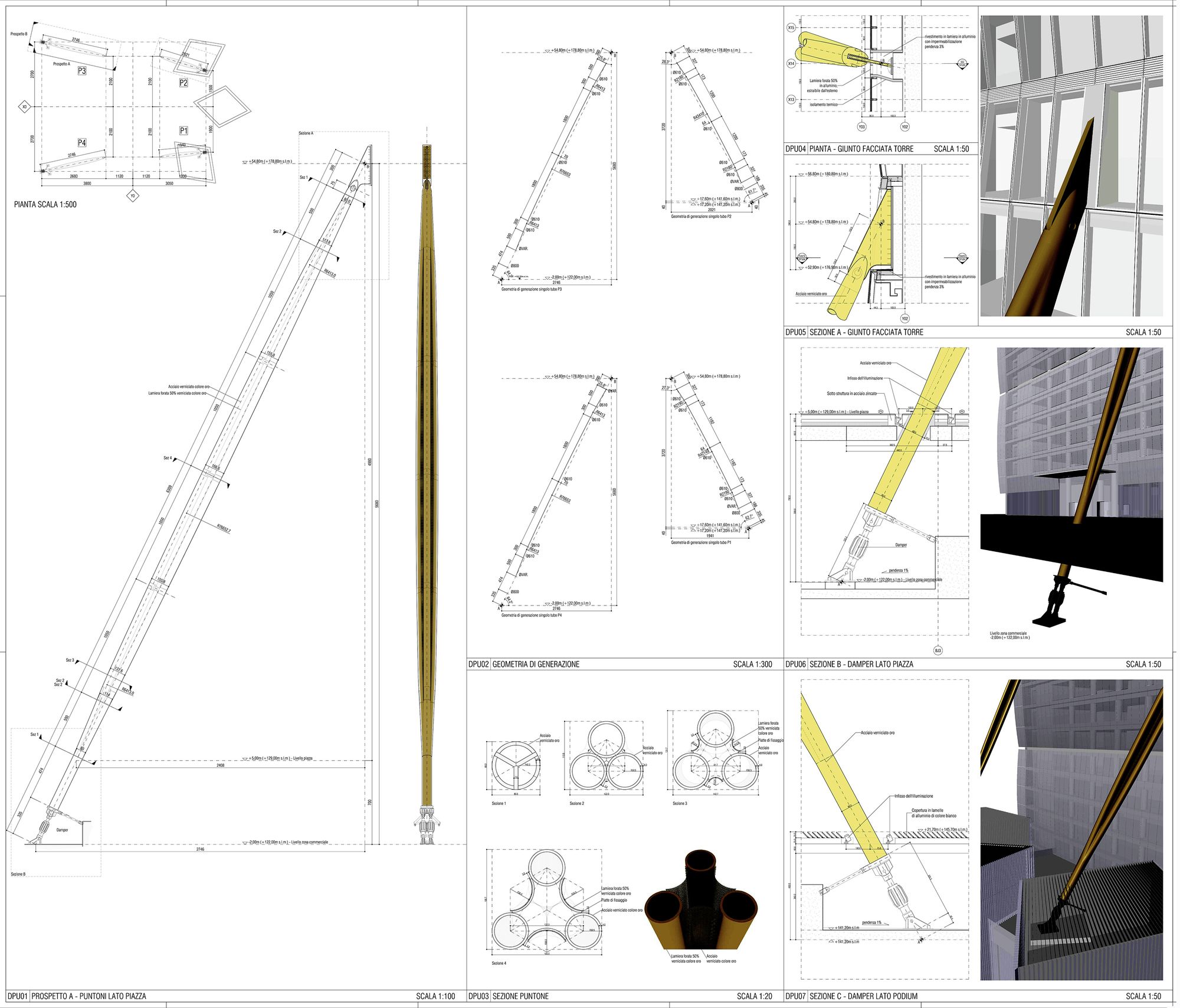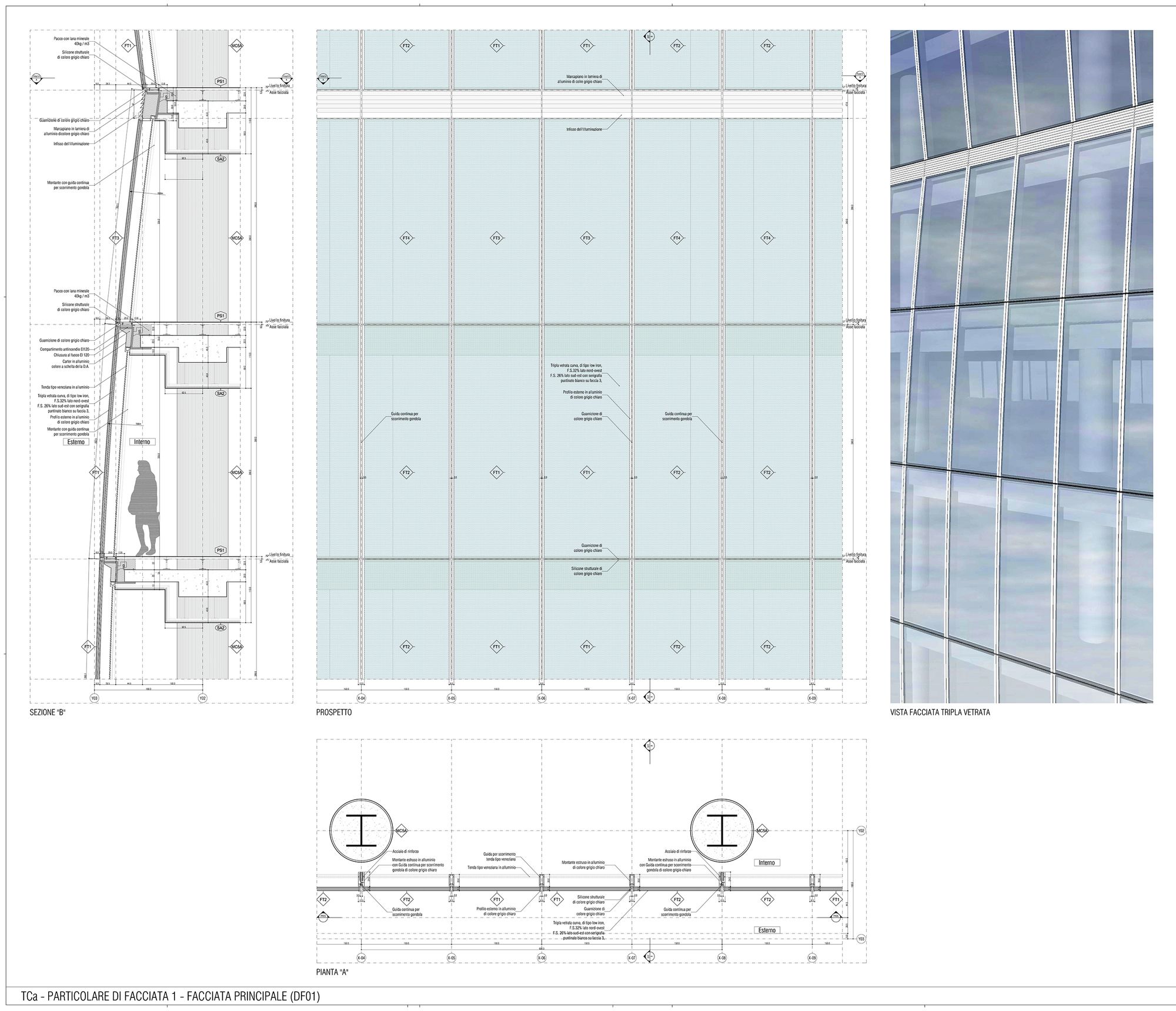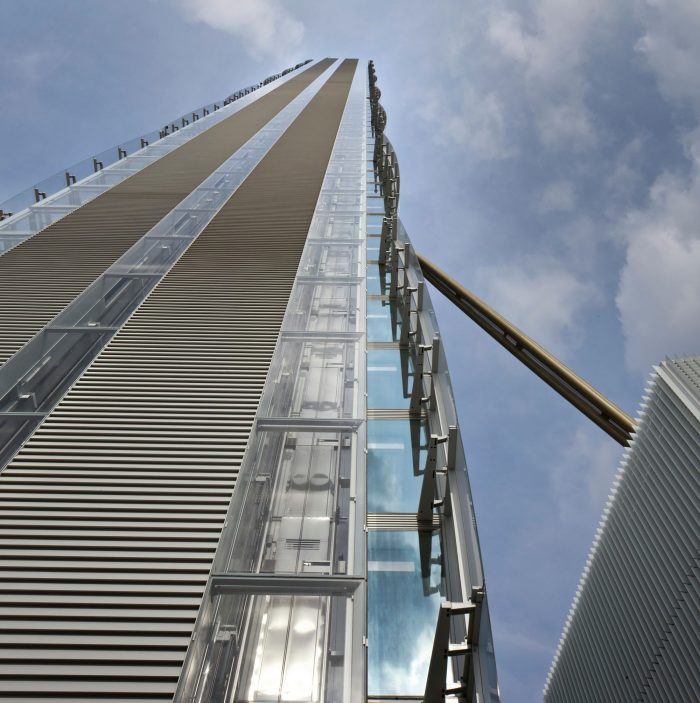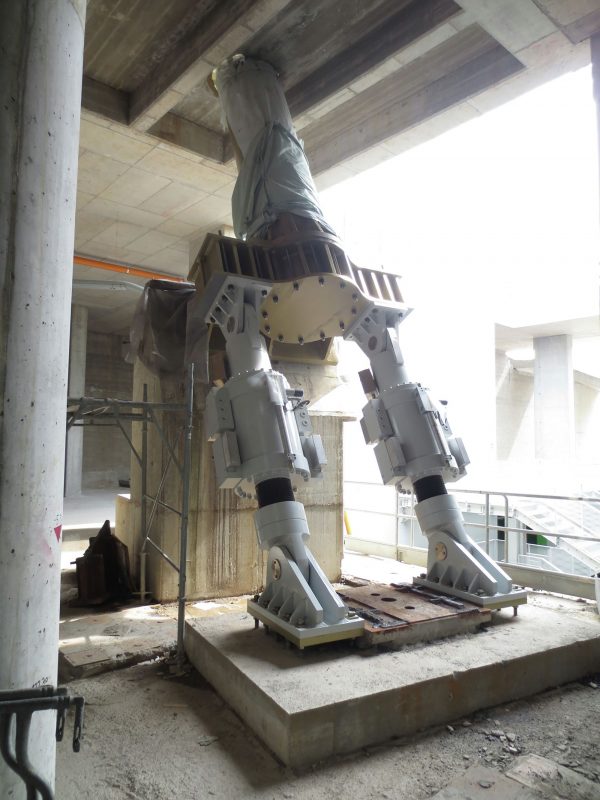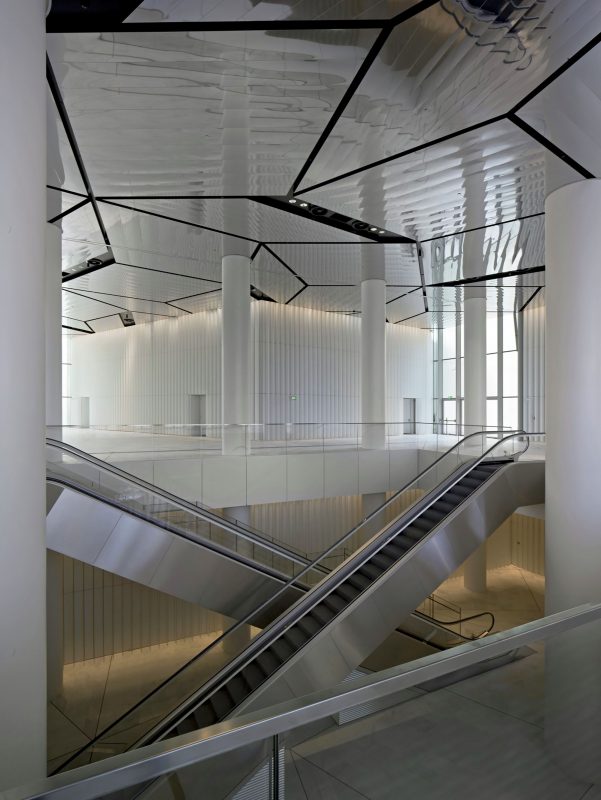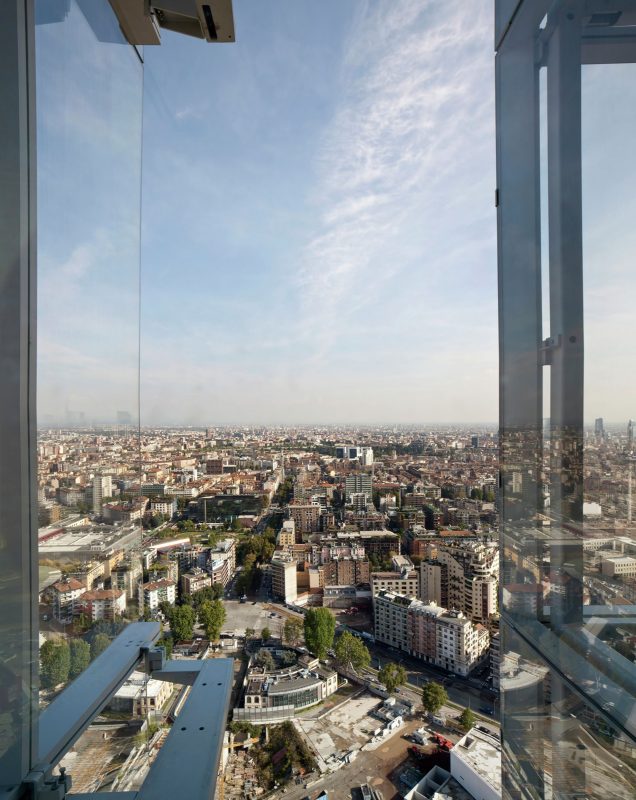ALLIANZ Tower
Milan is the city that best represents the international face of Italy, comparable to London, Frankfurt, Paris. Unlike many historical Italian cities, Milan is more related to its development in the nineteenth and twentieth century, to be more precise after the industrial revolution.
In this sense, design in Milan is compared with the most contemporary face of Italy, made up of factories, subways, concrete and steel and not so much of particular historical presences. The witness is the fact that the Futurist movement has developed mainly in Milan, a movement created to respond to the issues of the contemporary city. It was not a particularly important relationship with the large existing masterpieces, but rather a reflection on the themes of the contemporary city.
To develop the project, we immediately thought it was not interesting to rely on a single architect for the design of the whole complex but to start a dialogue. Due to the size of the area, we decided to aspire to re-interpret the complexity of the city through many architects who brought the idea of buildings with different shapes and materials.
In any street in Milan, there are buildings from different periods and with different architectural features. From this belongs the life of a city, in the dynamic tension between the works of later periods in an archipelago of images and colors. This was our ambition, choosing to work in a group. In our archipelago forms, we found interesting to develop the idea of a skyscraper without a limit, a kind of endless tower. Now we find skyscrapers of any shape and decoration in all parts of the world. Starting from this study, we looked at a fascinating concept to be applied to high-rise buildings, instead of studying only a shape of an aesthetic beauty.
In the aspiration of maximum verticality and tension towards the sky, it was a limit to choose a complete shape and concluded at a certain height and we preferred to apply the concept of a modular system that can be repeated in an infinite way with any limit. The module we decided is composed by 6 office floors with a long thin plan of 24×61.5m. The choice of these proportions is finalized to make the whole volume thinner to emphasize the verticality and makes it structurally provocative, due to the slender shape so high.
The facade of the module is composed of a triple glass unit slightly curved to the outside. The vertical succession of rounded forms creates a feeling of slight vibration of the volume of the building as it rises upward. Elevations of the short sides are fully glazed and show the mechanical series of panoramic lifts going up and down to the various floors of the building.
The idea of the endless tower can be compared to previous ambitions of other artists as Constantin Brancusi, for example, who in 1937-38 installed one of his endless column of Targu-Jiu in the park to create repeatable systems indefinitely. When asked about the reasons for this idea, Brancusi replied: “We need to support the vault of heaven.”
Project Info
Architects: Arata Isozaki , Andrea Maffei
Location: Milan, Italy
Client: Citylife S.p.A. / Armando Borghi, Marco Beccati – project director, Roberta Pasinetti – technical director, Roberto Russo, Andrea Zerbini, Gianni Armas, Martino Negri,
Area: 81615.0 sqm
Year: 2015
Type: Office Building
Photographs: Alessandra Chemollo
